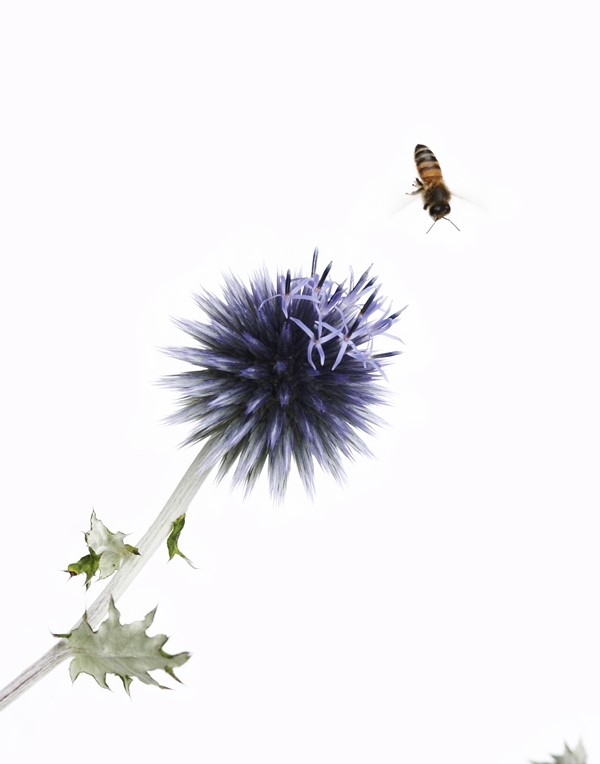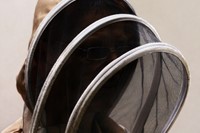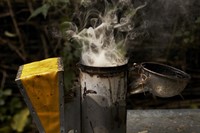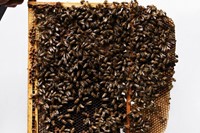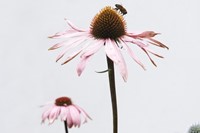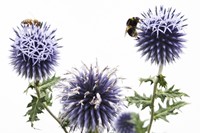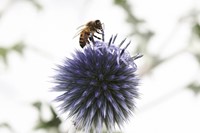Ian Bailey has been a beekeeper for 12 years, and looks after around 30 hives across London. Due to the recent surge in the popularity of beekeeping, finding a good spot to keep your hive has become competitive...
Ian Bailey has been a beekeeper for 12 years, and looks after around 30 hives across London. Due to the recent surge in the popularity of beekeeping, finding a good spot to keep your hive has become competitive. There are now thousands in the capital – many hidden up on the roofs of buildings you walk past every day. The wet weather has meant it’s been a poor year for honeybees – they can’t fly off to find food in the rain. But Bailey will still harvest about 10 kilos, or 30 jars, of honey per hive in September. That’s not really why he does it though – he says you get fed up with the taste after a while. Like many people he’s fascinated by the complex and subtle behavior of these incredible tiny insects, which are so integral to our own environment. “You never know what they’re going to do next”, he says.
Here, AnOther provides a round up of ten key bee facts alongside photographs shot by David Edwards, exclusively for AnOther in east London.
1) There are about 250 species of bees in the UK, of which the honeybee is just one. There are about 25 species of bumblebee, and the rest are solitary bees, so called because they don’t live together in hives. You don’t notice the solitary bees much because they’re quite small and indistinct, but they’re equally important as pollinators.
2) The main problem facing bees in this country is loss of habitat and food, due to the depletion of our meadowlands. If you want to help bees, leave spaces of the garden undisturbed – solitary bees love to nest in compost heaps, nooks and crannies. Planting native flowering plants is another good help – try to have a succession of flowers, and avoid overly-cultivated plants like double flowering cherries, as the bees can’t access the pollen.
"If you want to help bees, leave spaces of the garden undisturbed"
3) Honeybees live in colonies of around 40,000, and there are three types of bees in each colony: the queen bee, the worker bees and the drones. The worker bees and the queen bee are female, but only the queen bee can reproduce. Over the winter, About half the colony dies away.
4) Honey is the only food that includes all the substances necessary to sustain life, including enzymes, vitamins, minerals, and water.
5) Honeybees perform a “waggle dance” to indicate nearby sources of food. They dance in a certain direction to “point” to it according to the position of the sun and the amount of “waggles” indicates the distance.
6) When the queen is about a week old, she flies off and mates for two or three days, after which she begins to lay eggs. Enough sperm are stored in her pouch to fertilise all the eggs for the rest of her 5-year life. The queen bee will lay up to 2500 eggs per day.
7) A honeybee can fly for up to six miles to find food, at up to 15 miles per hour. Honeybees visit about 2 million flowers to make one pound of honey. A hive can produce about 30 kilos of honey in a good year.
"When the queen is about a week old, she flies off and mates for two or three days, after which she begins to lay eggs"
8) Queen substance is a combination of pheromones produced by the queen, and licked off her by the worker bees as they pass her in the hive. It gets passed from worker to worker, giving the colony a sense of wellbeing. If the queen dies, the substance in the hive suddenly plummets, and they rush to make a new queen from one of the eggs.
9) To make a new queen the workers feed one of the eggs in the hive a substance called royal jelly.
10) The personality of the hive depends on the personality of the queen. If you get an aggressive one you may want to replace it. Beekeepers order queens online and receive them through the post.
Text by Nancy Waters
